The views expressed in our content reflect individual perspectives and do not represent the official views of the Baha'i Faith.
Beyond the initial armistice forced upon the world by the fear of nuclear holocaust, beyond the political peace reluctantly entered into by suspicious rival nations, beyond pragmatic arrangements for security and coexistence, beyond even the many experiments in co-operation which these steps will make possible lies the crowning goal: the unification of all the peoples of the world in one universal family. – The Universal House of Justice, 1985 Oct, The Promise of World Peace, p. 4.
Once, when I was about thirteen years old, I decided that the world would be better off without nuclear weapons. So I made a peace sign on a piece of cardboard and nailed it to a stick and carried it everywhere I went for about a week.
Needless to say, my sign drew quite a bit of commentary from the people I knew, some positive but most not. Fellow students at my school began to think I had completely lost my mind. Teachers asked pointed questions. Some people laughed. One (former) friend made his own parody sign, which said Kill Peace! I failed to see the wit in that retort.
But I kept carrying my sign, convinced that my responsibility to act overrode my fear of ostracism and derisive laughter. After all, kids still practiced getting under their desks at school to prepare for the time when a nuclear weapon would land. As a boy, those “bomb drills” had convinced me that the terrible destructive power of nuclear weapons might one day kill us all.
After about a week of this, my dad saw the sign. He scoffed a little, too. “Peace is good, son,” he told me. “Nobody ever wins a war. But you’re here today because of the bomb.”
“What?!” I said, shocked.
“I was on a troop ship in the South Pacific, about to invade Tokyo, when Truman dropped the bomb on Hiroshima and Nagasaki,” he told me. “We all expected to die in that ground invasion. The experts said there would’ve been a million casualties. If those bombs hadn’t worked, I probably wouldn’t be here today—and neither would you.”
This gave me a very odd feeling, like I owed my life to the world’s worst murderer.
I thought about my father’s story recently, when I remembered that September 2nd marks the 70th anniversary of the end of World War II. Japan signed the surrender documents on board the American battleship USS Missouri on that day in 1945. Finally, the world’s most devastating conflict had come to an end. That global combat involved almost every nation and every person on Earth. The most widespread war in human history, World War II killed (depending on whose estimates you believe) somewhere between 50-85 million people. Humans have never done anything more deadly.

The aftermath of Nagasaki
Of course, World War II saw the first, and only, use of nuclear weapons. At Hiroshima one bomb killed 66,000 people and injured 69,000 in a millisecond. Three days later, one bomb dropped over Nagasaki killed more than 40,000 people instantly. Japan’s memorial for the victims of the two atomic bombs now lists almost 500,000 deaths.
But those terrible weapons did more than kill half a million people—they made everyone on Earth aware that we humans now had the power to exterminate our entire species. That realization changed the psychological atmosphere of the whole planet, by holding the future hostage. Nuclear weapons brought us all a perverse and terminally depressing prophecy—the awareness of a man-made apocalypse we could someday rain down on ourselves. With those two bombs, the notion of global annihilation—which the Baha’i writings had alluded to years before—entered the public consciousness:
A strange and wonderful instrument exists in the earth; but it is concealed from minds and souls. It is an instrument which has the power to change the atmosphere of the whole earth, and its infection causes destruction. – Baha’u’llah, Baha’i World Faith, p. 183.
Soon after those two bombs dropped, artists began to respond. Novelists, filmmakers, painters, musicians, sculptors and dancers began to focus on doom, death and disaster. Dystopic art, which depicts deadly, wholesale destruction as our inevitable future, began to proliferate and prevail. Some even argued that the entire psyche of humanity began to replace its optimism for a better future with a deep and abiding pessimism.
Today that dire vision of the future has gained ground. Many people seem to believe that we now approach the end of the world as we know it. Fundamentalist religious groups believe that the “end times” are upon us. Surveys show that large portions of the population in most nations think the human race will soon become extinct. Thousands of films and books depict a coming mass pandemic, a runaway environmental collapse, a nuclear Armageddon, an asteroid impact event, or even that zombie apocalypse we’ve all heard about.
Baha’is believe the exact opposite—that humanity has a glorious, peaceful, united future ahead.
So in the final essay in this series, we’ll take a look at the idea of a global apocalypse, both from a religious and a scientific standpoint, and try to determine just what the dreadful prophecies and predictions really mean. We’ll explore the differences, from a factual and a spiritual standpoint, between pessimism and optimism about the world’s fate.









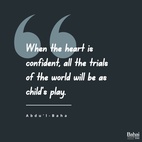
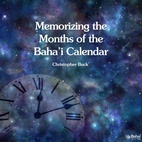

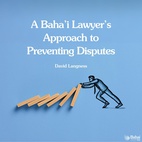
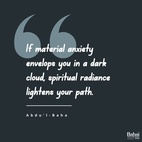

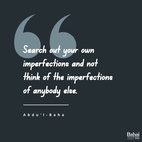

Comments
Sign in or create an account
Continue with Facebookor